Farmhouse dinner rolls are my favorite bread. In fact, I can easily chow down 1/2 dozen without even blinking an eye. I will pass up the most delicious sweets for one of these soft buttery rolls every time. They are so wonderful that guests now request I make giant batches during the holidays in order to take some home with them.
This particular recipe is based off of several ideas after learning about the hydration rate of dough, weighing ingredients and why so many of my breads were inconsistent. Turns out we as Americans are lacking when it comes to bread making because we tend to resist using weights over measurements. We are also taught to fear sticky dough. So we add more and more flour until the bread is heavy and often tough in texture. Let me help you out. For great bread: do not add additional flour. This is so important that I will repeat: DON’T ADD FLOUR!
This recipe is also really great for making cinnamon rolls and sticky buns. I found it is the perfect dough for just about any type of occasion. This is because it’s an enriched dough with a 63.63 repeating hydration rate. The reason for this number was my obsession with the number three and anything that goes evenly into the number. Aren’t you fascinated how I came up with the recipe for farmhouse dinner rolls? That’s okay. They are still flipping fantastic. Happy baking!
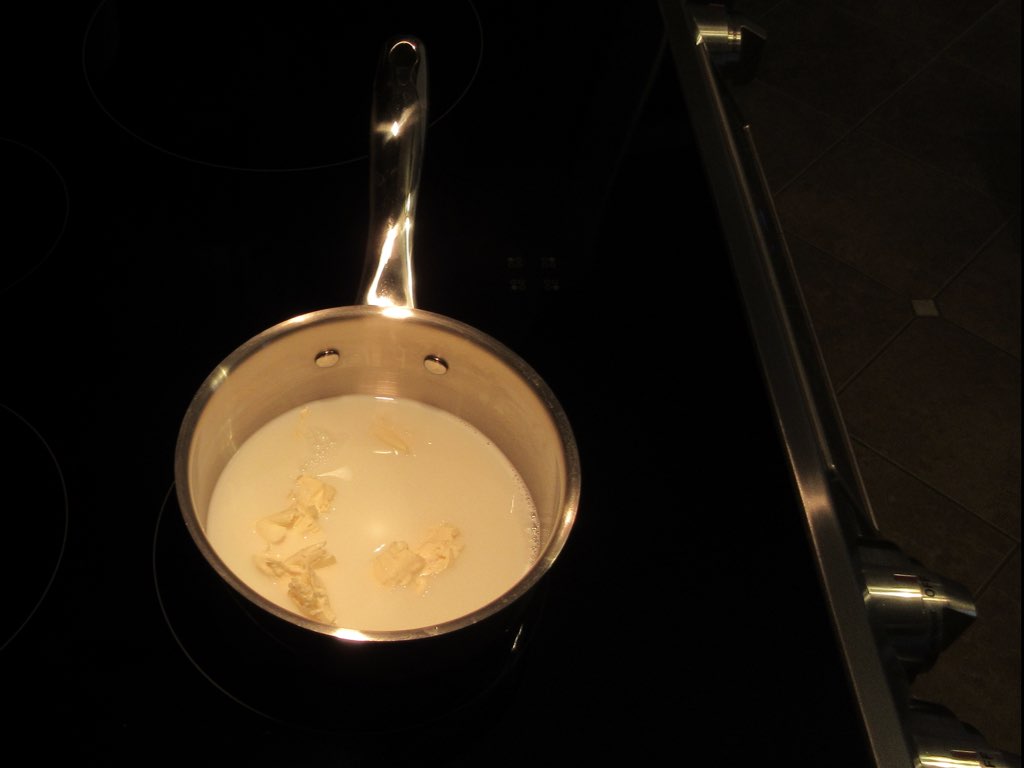
First, heat milk and butter. Add yeast and let dissolve. until butter just melts. Add yeast. Wait 5-10 minutes. 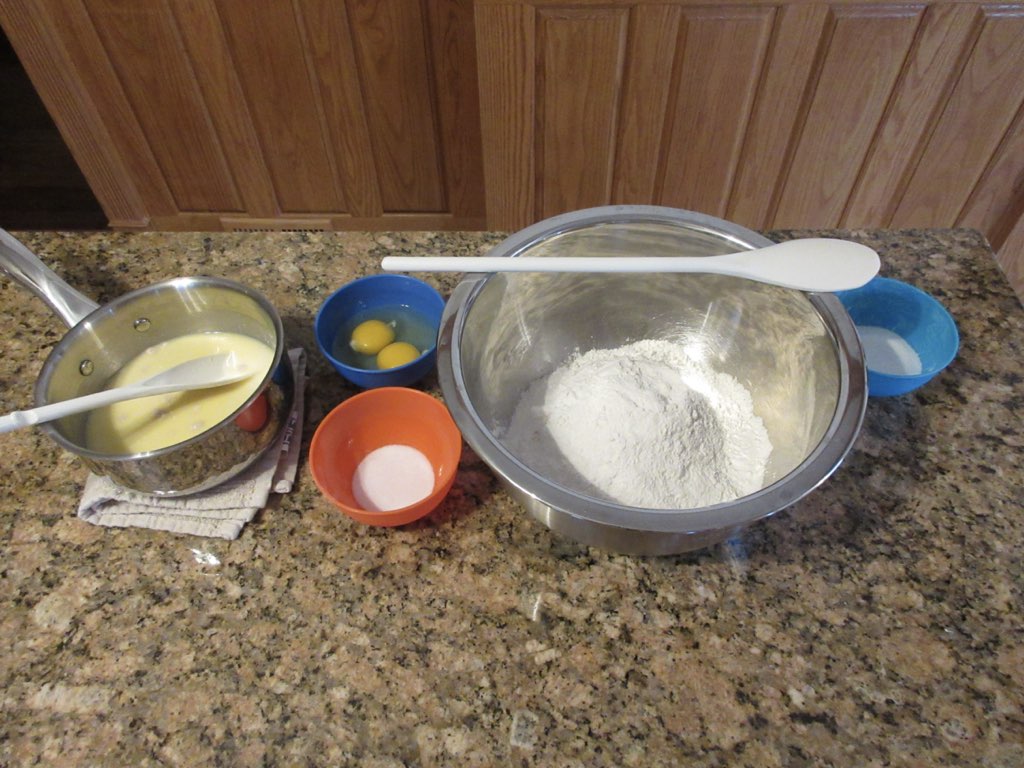
Then gather the remain ingredients. 
First, stir together all ingredients. 
It will be a sticky, shaggy dough. 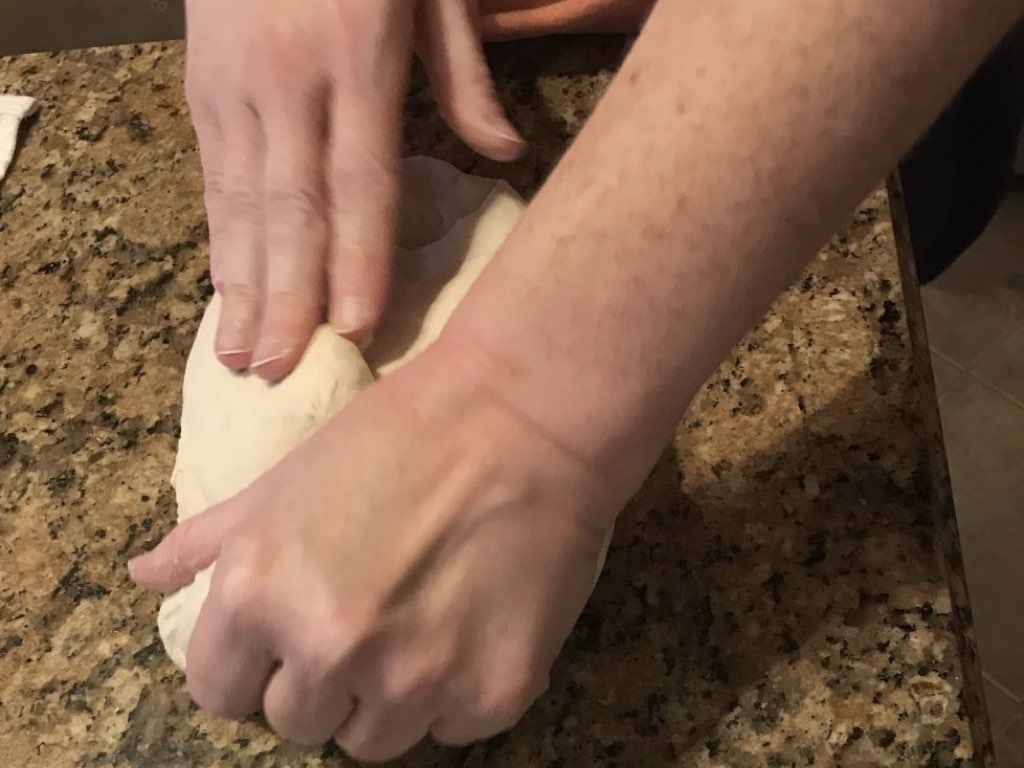
As you knead, it will get smooth. 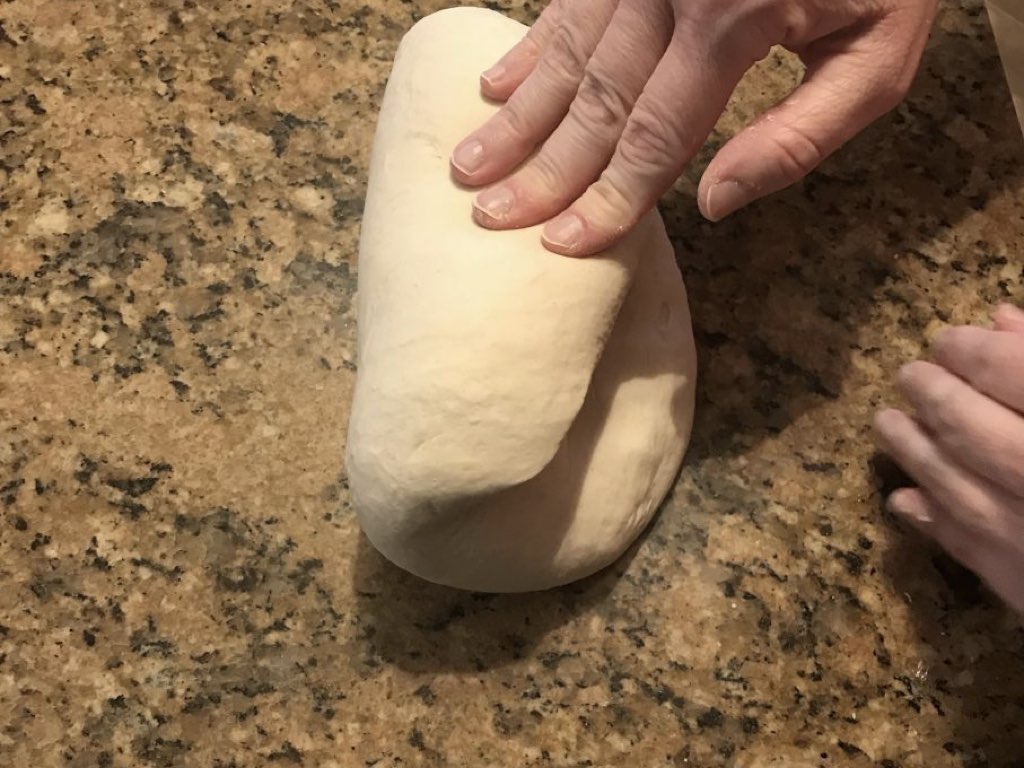
Fold in half, 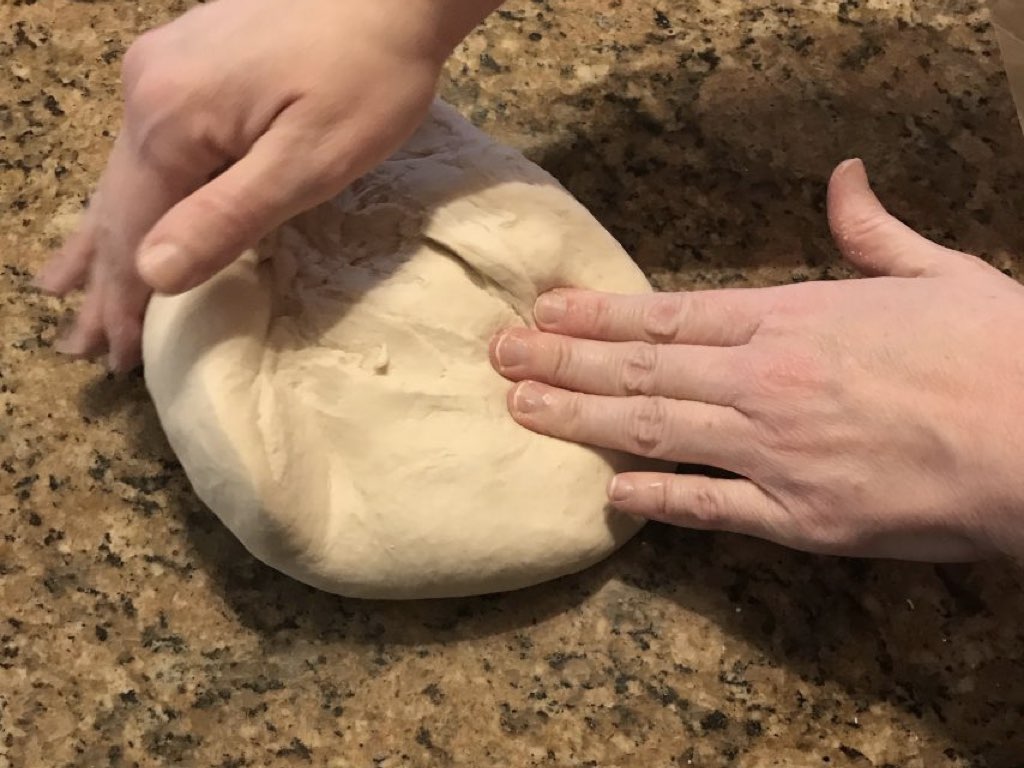
Press away. 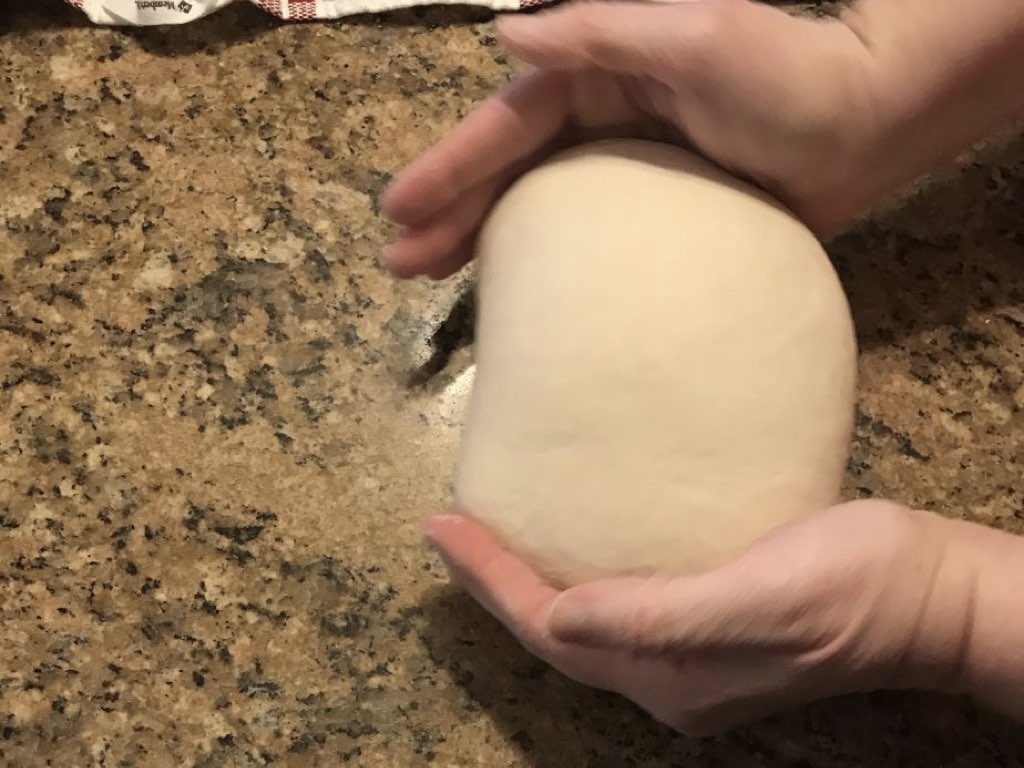
Once it is a smooth and stretchy dough, 
Roll into a ball. 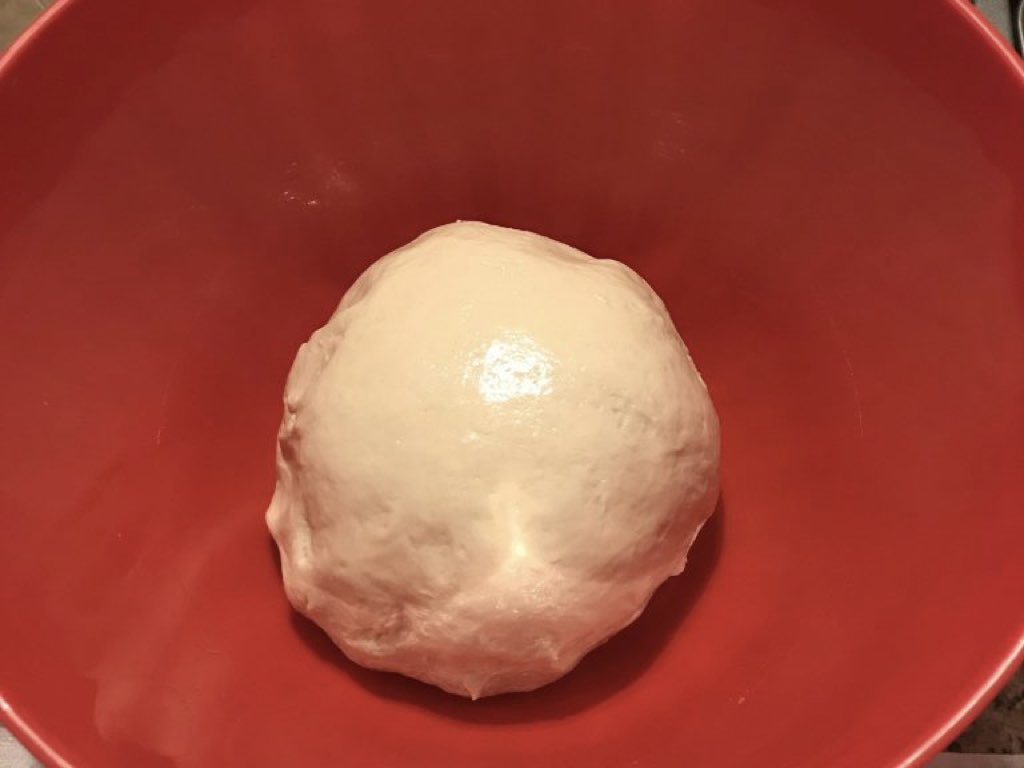
Place into a container to rise. Cover. 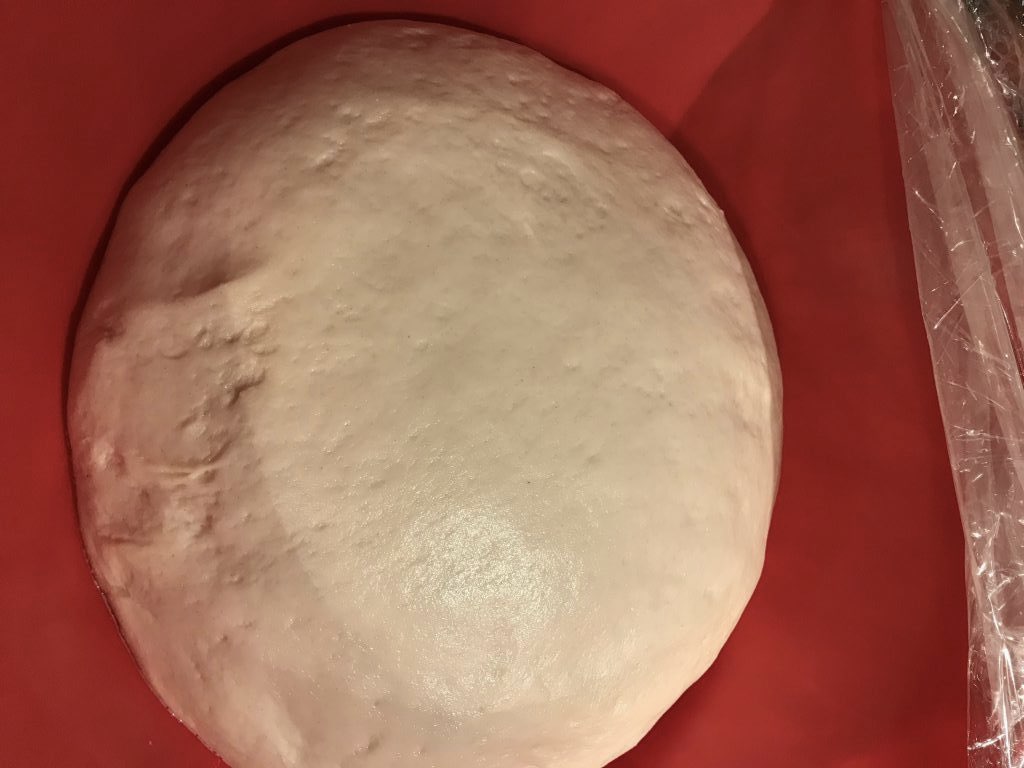
Wait until about double in size. 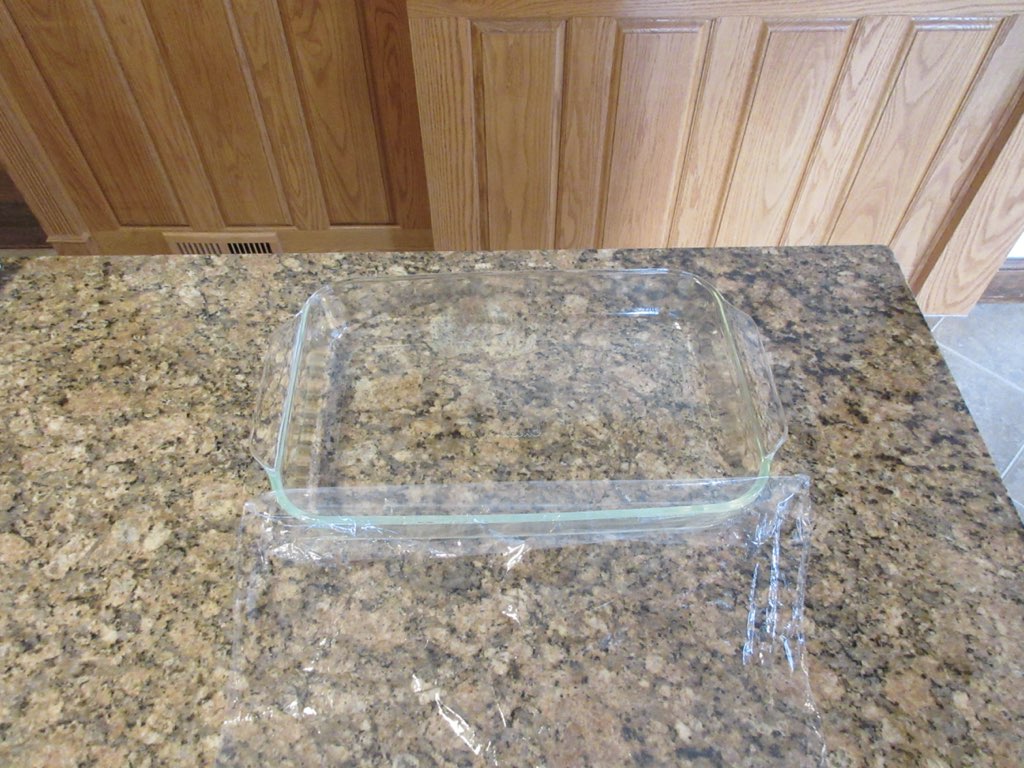
Next, prep your pan by spraying it. 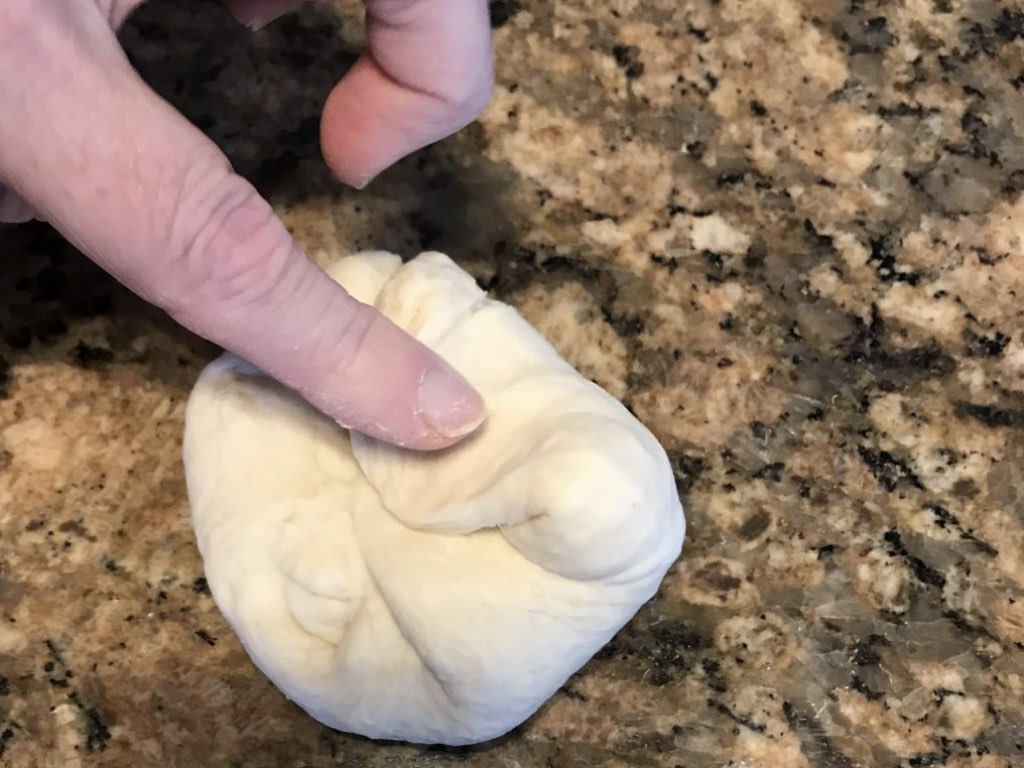
To make a roll, fold each side in like this. 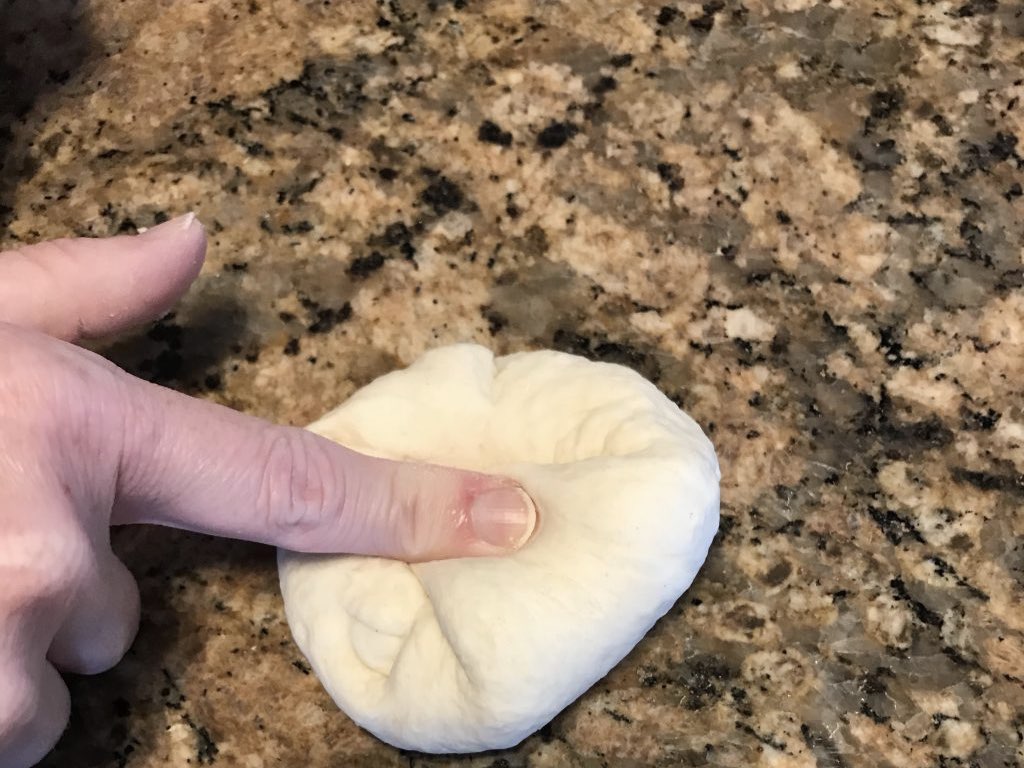
North, East, South and West. 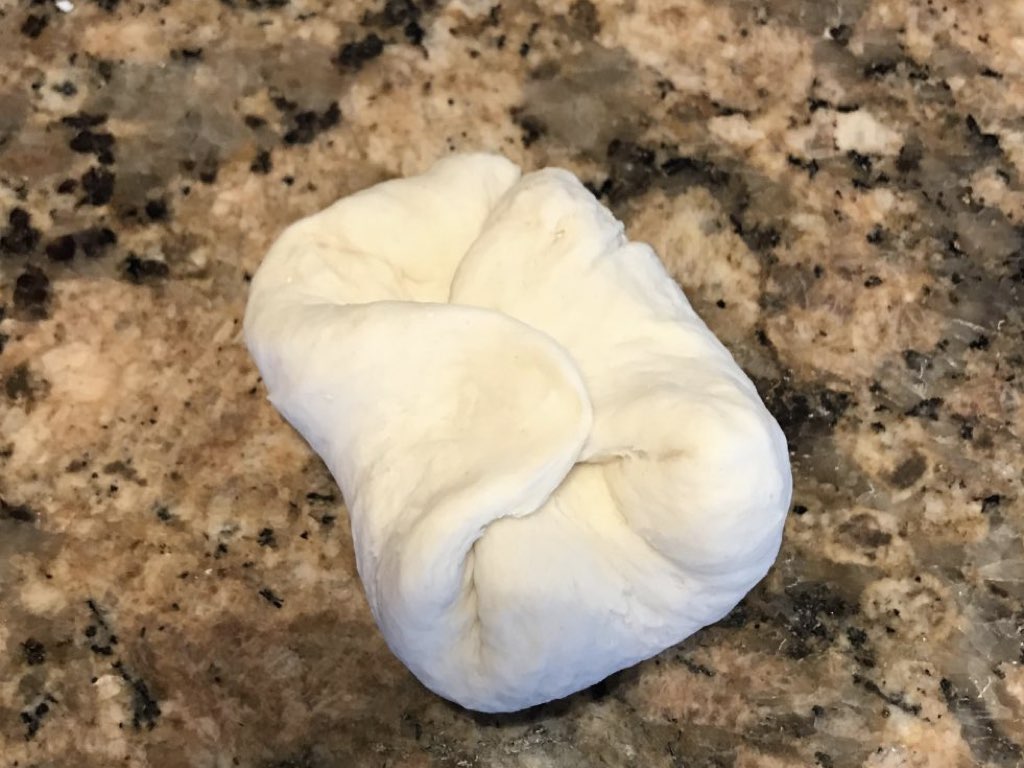
It will look like a square. 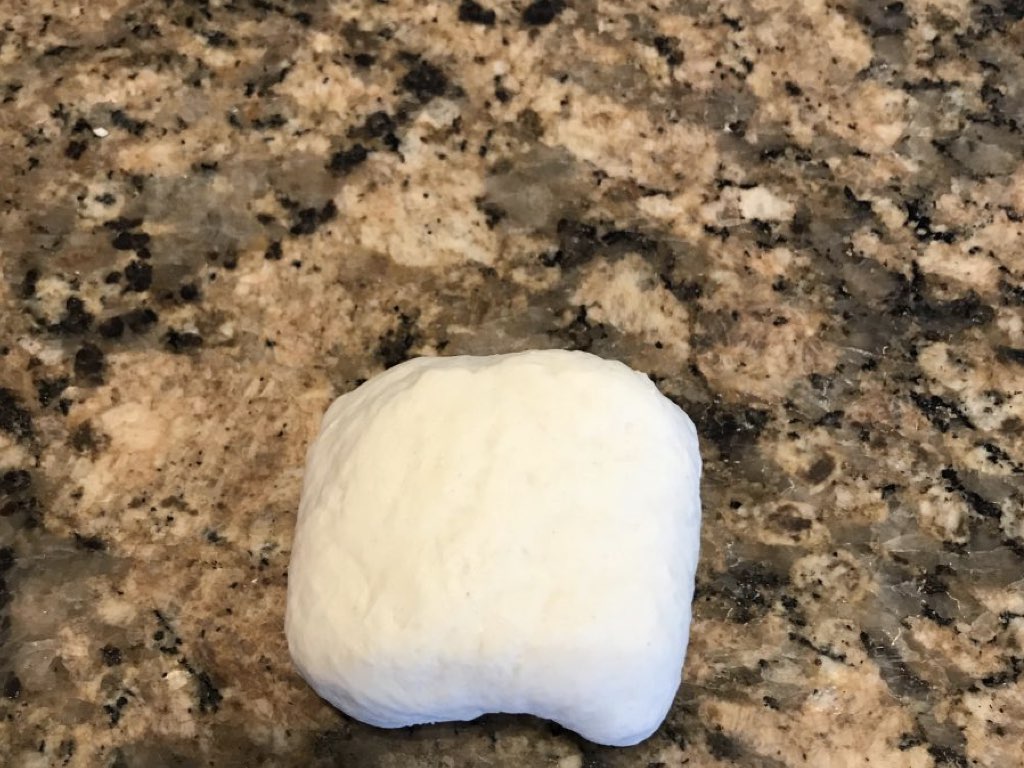
Flip seem side down. 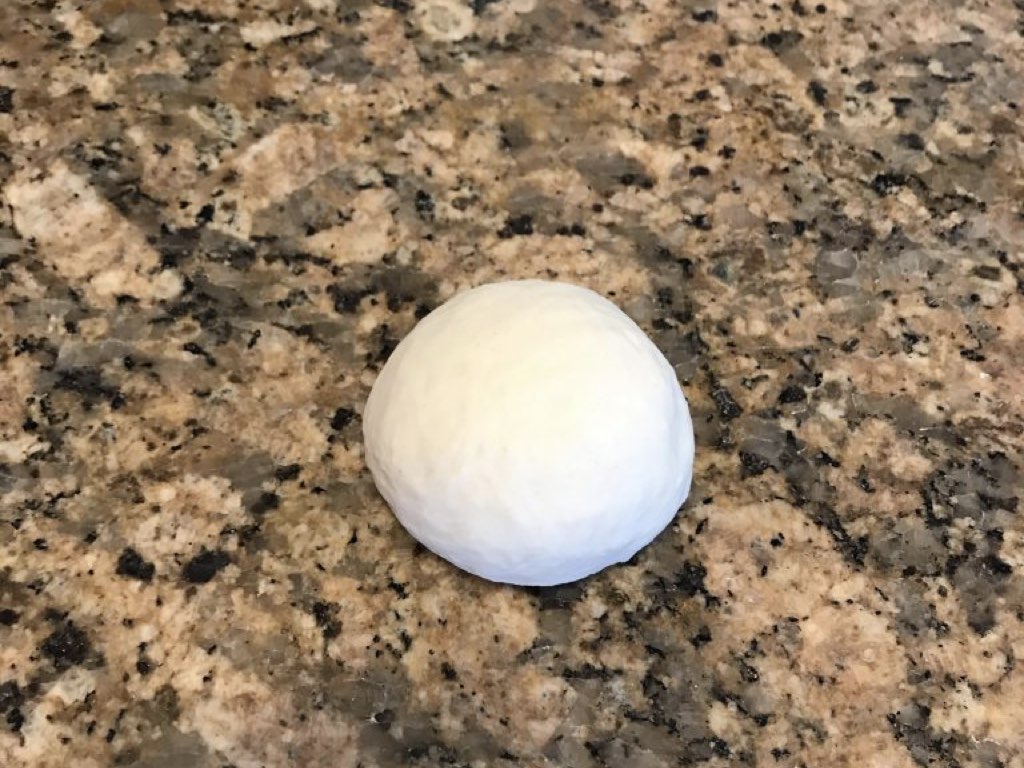
Roll around with the palm of your hand. 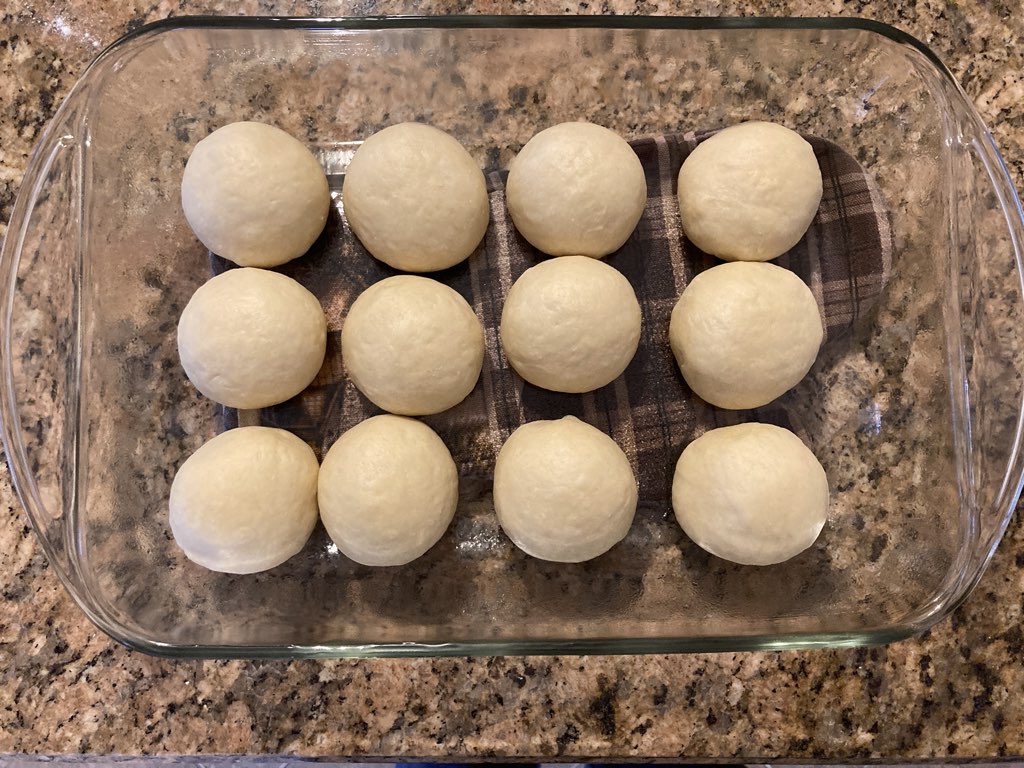
Place in a greased baking dish. 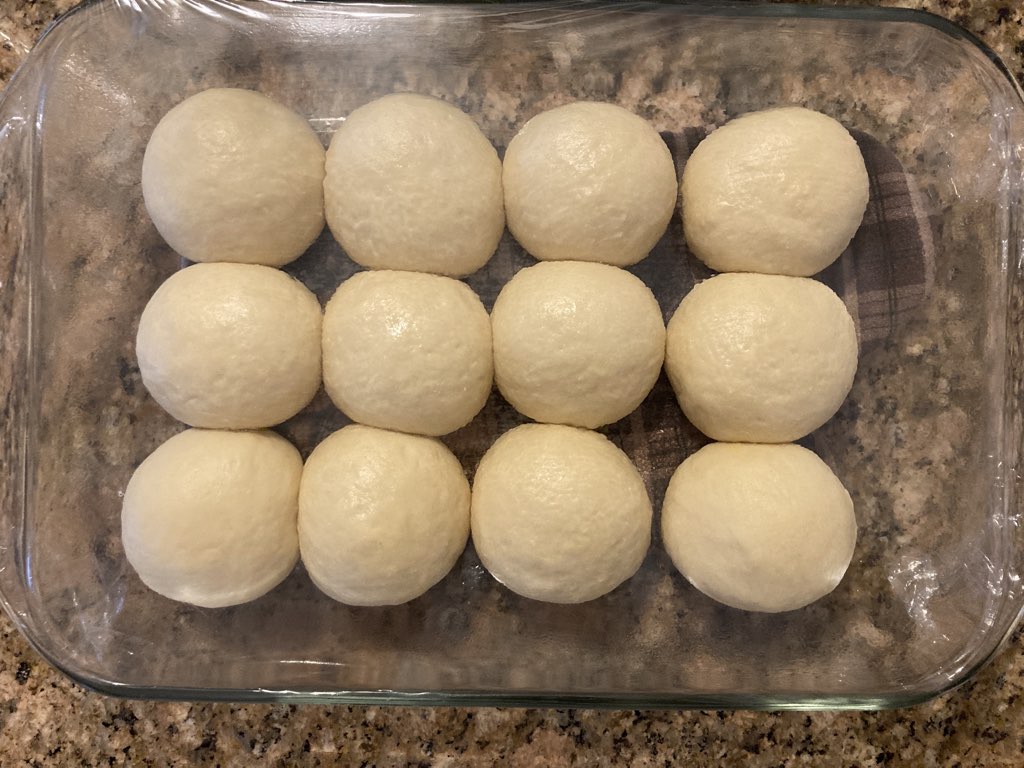
Cover and then rest for 60 minutes. 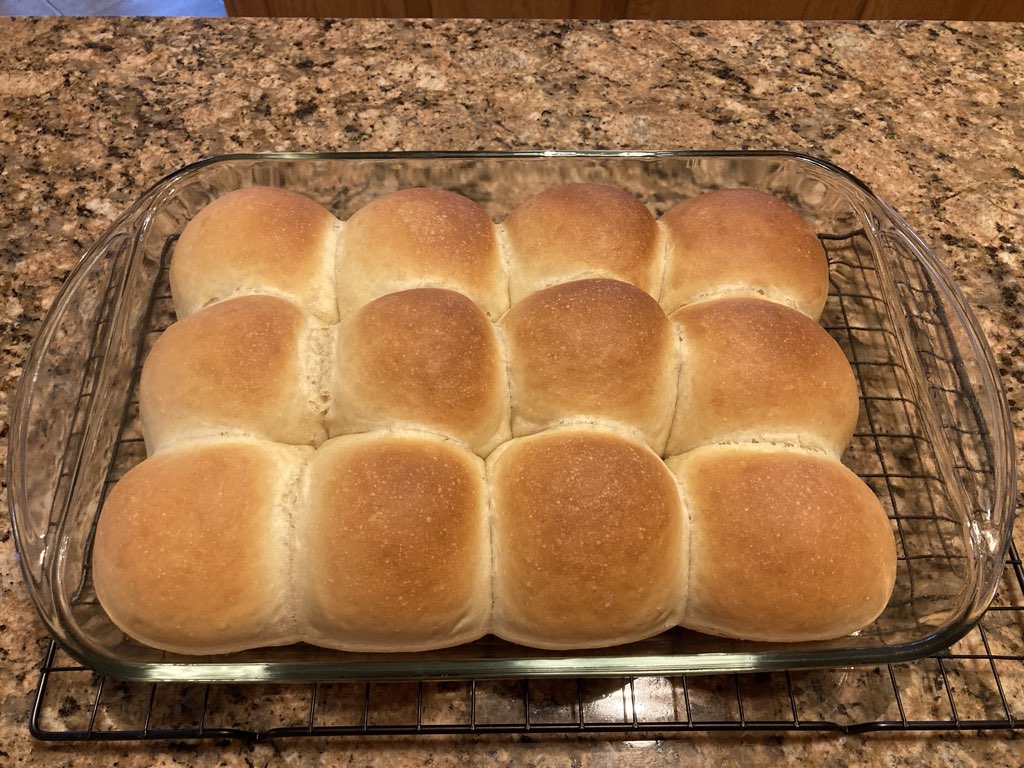
Bake. 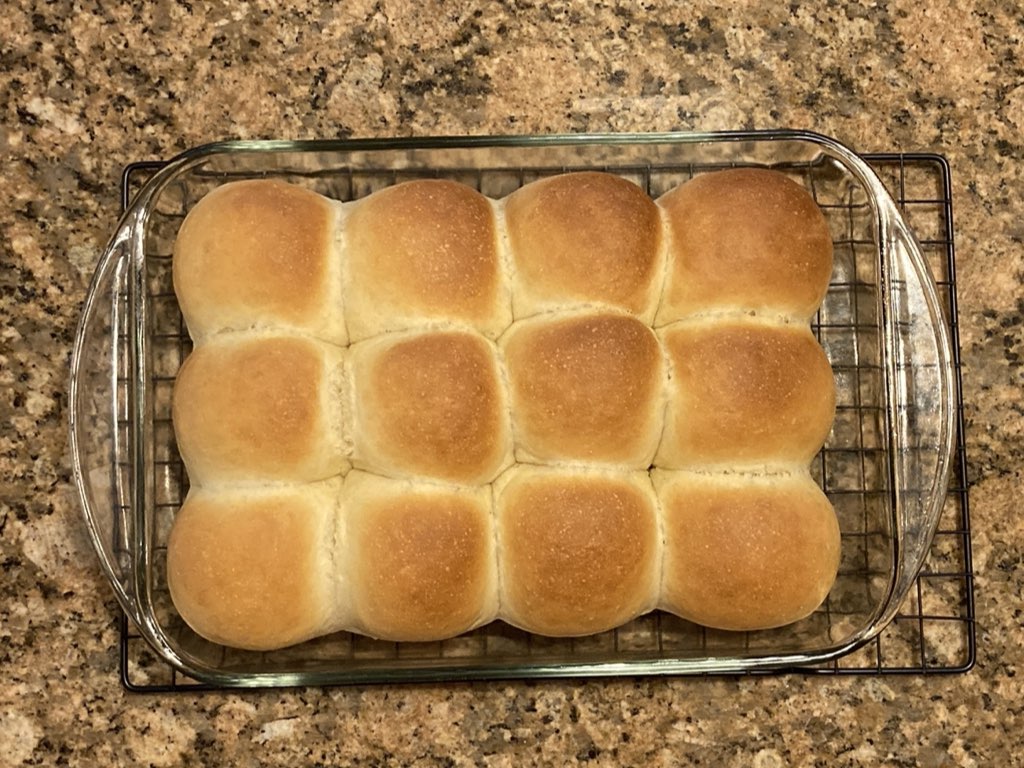
If desired, brush with melted butter. 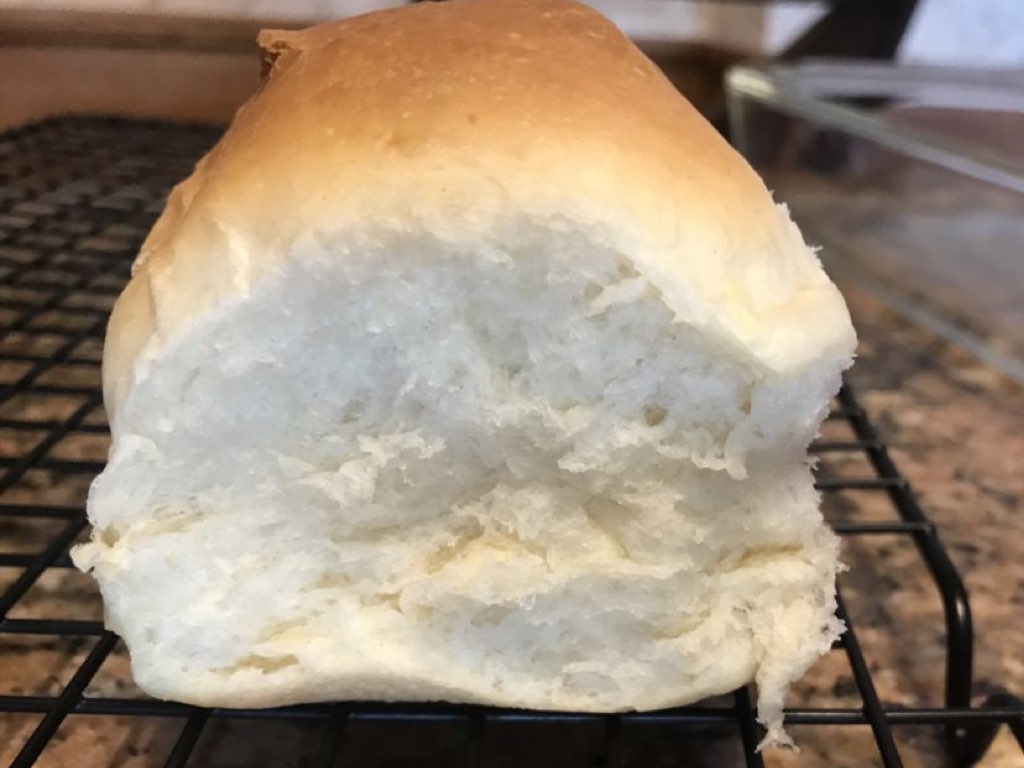
Happy baking!
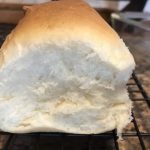
Farmhouse Dinner Rolls
Ingredients
- 3 ⅔ cups (550g) flour
- 1 cup (240mL) milk
- 2 large (100g) eggs
- ¼ cup (56g) butter
- ¼ cup (50g) sugar
- 2 tsp (7g) yeast
- 1 tsp (5g) salt
Instructions
- Heat milk and butter together to about 110F (43C) or just until butter is completely melted. Add yeast and stir to dissolve.
- Combine all ingredients and mix by hand until a shaggy dough forms.
- Turn out onto a clean work surface and knead by hand 8 – 10 minutes or until dough can be easily stretched without tearing
- Place back in the bowl, cover and let rise 1 – 2 hours or until double in size.
- Grease or spray a 9×13 (23×33 cm) baking dish.
- Divide dough into 12-15 pieces and roll into a ball. Place in baking dish spaced evenly apart.
- Cover and let sit 60-90 minutes until dough doubles in size.
- While the dough is rising, preheat oven to 350F (180C.)
- Bake 20 – 25 minutes until tops are golden brown. Center of dough should read between 190 – 200F (88 – 93C.)
- Cool on wire rack or serve while still warm.

I think maybe adding flour was why my bread never turned out well all these years. That and not understanding when I had kneaded enough. Do you have a preference of flour when making bread? Bread flour or all purpose. Is one different than the other when kneading? Can you tell the difference in the taste after baking? My bread is better. No longer “heavy as a brick” LOL
Definitely was the adding flour. It’s not your fault though as so many recipes are written “add 3-8 cups of flour.” :D. So as to the bread flour: it depends on the recipe. All the recipes I’ve created were designed for the beginner, so I tried to make them to use all-purpose. I did this as it’s cost effective, easier to find and most will make recipes that call for bread flour with all-purpose anyway. So unless the recipe on here specifically says “you must use this type of flour” use whichever you want to try out. I actually prefer all-purpose flour for 99% of the recipes out there. For something like a french bread or sourdough, the bread flour can be helpful as it gives a chewy texture to the bread. The main difference is the bread flour has a higher protein content, so it gives bread strength and gluten develops faster so you don’t need to knead as long. But it’s literally just a few minutes so it’s not worth the price for me. You can taste the difference in some recipes such as a bagel where you want it to be chewier, but I wouldn’t call it earth shattering. I rarely use bread flour to be honest. It’s just not worth the expense or hassle finding it. I do find it most helpful when working with a blend of flours as something like rye doesn’t have a lot of gluten, so the bread flour helps compensate. By the way, I’ve been baking bread for around 30 years now, and I still sometimes come out with a brick if I get lazy and use US cup measurements instead of weighing. 😀